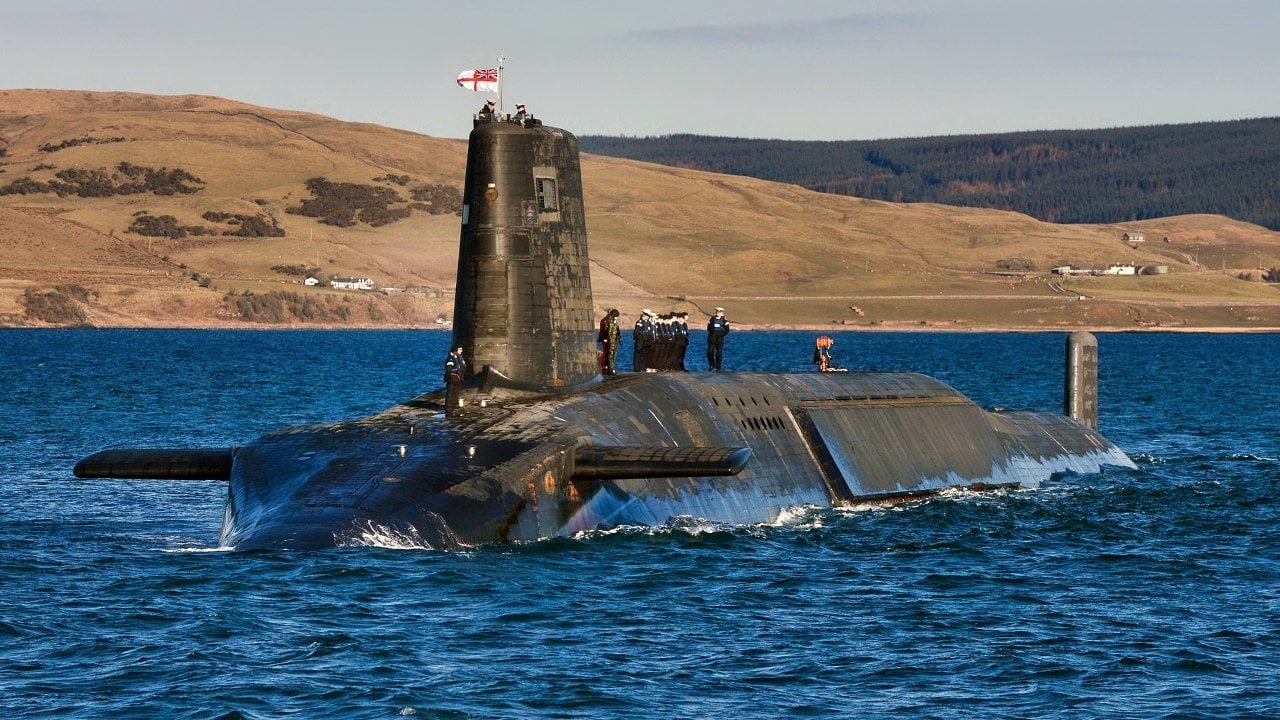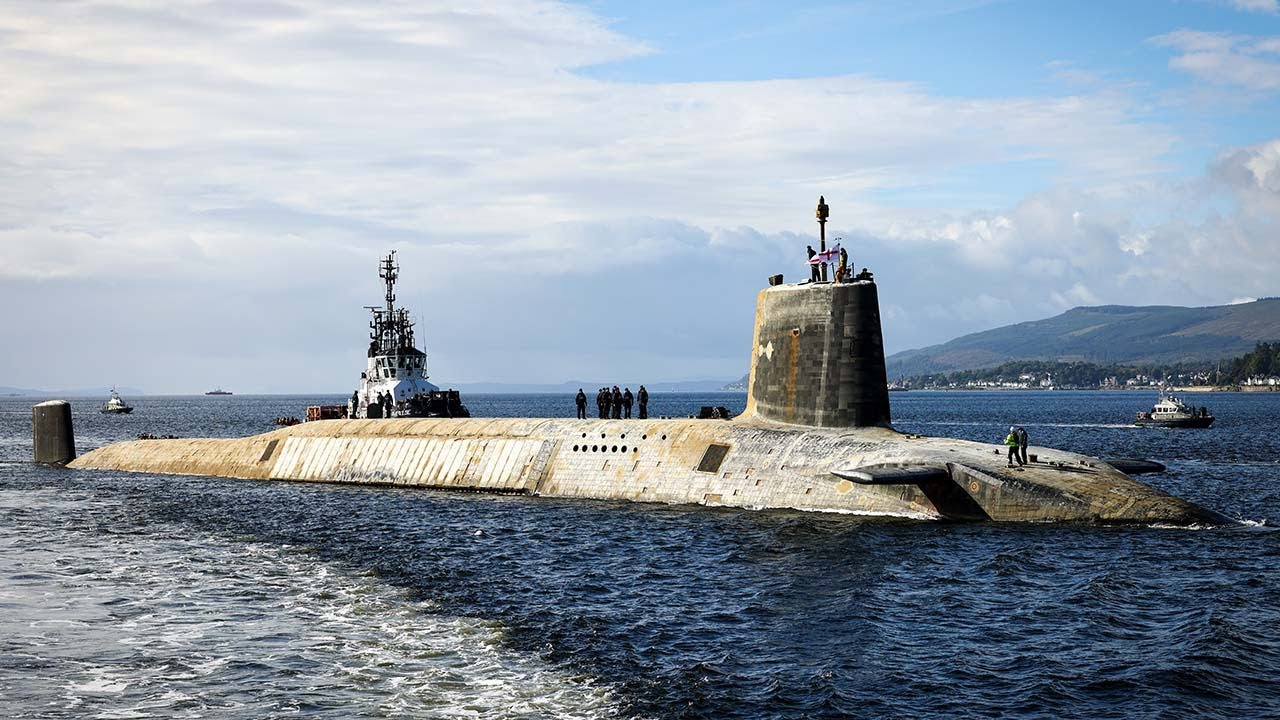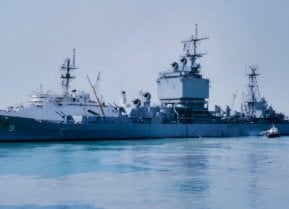HMS Vengeance Submarine Surpasses Previous Record, Spending 201 Days Underwater
The crew of the Royal Navy’s HMS Vengeance recently set a new record for the longest deployment on a "doomsday" submarine, totaling 201 days mostly spent underwater, surpassing HMS Vigilant's previous 195-day record.
Summary: The crew of the Royal Navy’s HMS Vengeance recently set a new record for the longest deployment on a "doomsday" submarine, totaling 201 days mostly spent underwater, surpassing HMS Vigilant's previous 195-day record. This marathon patrol highlights the challenges faced due to a shortage of operational Vanguard-class submarines, which serve as the UK's primary nuclear deterrent. HMS Vengeance, a nuclear-powered submarine, returned to Faslane, Scotland, after a deployment characterized by six-hour shifts and minimal contact with the outside world, save for heavily vetted 40-word "family grams." The Vanguard-class, consisting of four submarines, forms the backbone of the UK's nuclear deterrent, each armed with Trident II D5 nuclear missiles and equipped for stealth and endurance undersea.
Behind the Record: Life on HMS Vengeance During Its Historic 201-Day Patrol
It takes a special breed of men and women to serve on a submarine, but the crew of the Royal Navy’s HMS Vengeance recently completed a marathon deployment beginning on August 29 of last year. In total, the crew spent 201 days at sea—and according to reports from the British media, most of that time was underwater. It surpassed the previous record of 195 days, set by HMS Vigilant last year.
The back-to-back record-breaking patrols were due to a shortage of Royal Navy vessels that serve as the UK's primary nuclear deterrent. The senior service has four “doomsday” submarines, but one of them, HMS Victorious, remains in dock awaiting major repairs.
“Our continuous at sea deterrent protects us and our NATO allies every moment of every day,” a Royal Navy spokesperson said in a statement to the British tabloids. “We are immensely grateful to the submariners onboard, and their loved ones, for their commitment and dedication. While we do not comment on patrol lengths, we take safety very seriously and all submarines go through rigorous safety checks before any patrol.”
The Life Aquatic
The Vanguard-class nuclear-powered HMS Vengeance returned to its base in Faslane, Scotland, on Monday.
For the nearly seven-month-long deployment, the crew members undertook six-hour-long shifts—all living “comfortably” together in a 491-foot-long metal tube. While the Royal Navy's attack submarines do surface during their missions, ballistic missile boats—known in the Royal Navy as the “bombers”—remain hidden under the water.
The crews only received heavily vetted “family grams”—a weekly forty-word message—from the outside world and were unable to respond—as sending a signal could risk revealing the submarine's location. Bad news or anything that might upset crew members is deleted so as not to cause unneeded concern.
The Vanguard of the Royal Navy
The Royal Navy’s four Vanguard-class nuclear-powered submarines (SSBNs) are the centerpiece of the UK’s nuclear deterrent. Each of the boats is equipped with Trident II D5 nuclear missiles. As the largest submarines ever constructed in the UK and the third-largest type of vessel in the Royal Navy, they were designed to serve as a nuclear deterrent. Still, the Vanguard-class is also equipped with four twenty-one-inch (533mm) torpedo tubes and can carry up to sixteen Spearfish heavyweight torpedoes.
The Vanguard-class began service in 1994 as part of the British military's Trident nuclear program and includes just four boats: Vanguard (S28), Victorious (S29), Vigilant (S30), and Vengeance (S31). Construction took place between 1986 and 1999 at Barrow-in-Furness, Cumbria, by what was then Vickers Shipbuilding and Engineering (now BAE Systems Marine).

A Rolls-Royce PWR2 nuclear reactor with two GEC turbines, a single shaft, a single pump-jet propulsor, and two WH Allen turbo generators powers each submarine.
All four submarines are based at HM Naval Base Clyde, west of Glasgow, Scotland. The Vanguard-class boats were originally intended for an operational life of twenty-five years and will be replaced in the coming years as the new Dreadnought-class of ballistic missile submarines enters service.

Author Experience and Expertise
Peter Suciu is a Michigan-based writer. He has contributed to more than four dozen magazines, newspapers, and websites with over 3,200 published pieces over a twenty-year career in journalism. He regularly writes about military hardware, firearms history, cybersecurity, politics, and international affairs. Peter is also a Contributing Writer for Forbes and Clearance Jobs. You can follow him on Twitter: @PeterSuciu. You can email the author: [email protected].
Image: Royal Navy.


